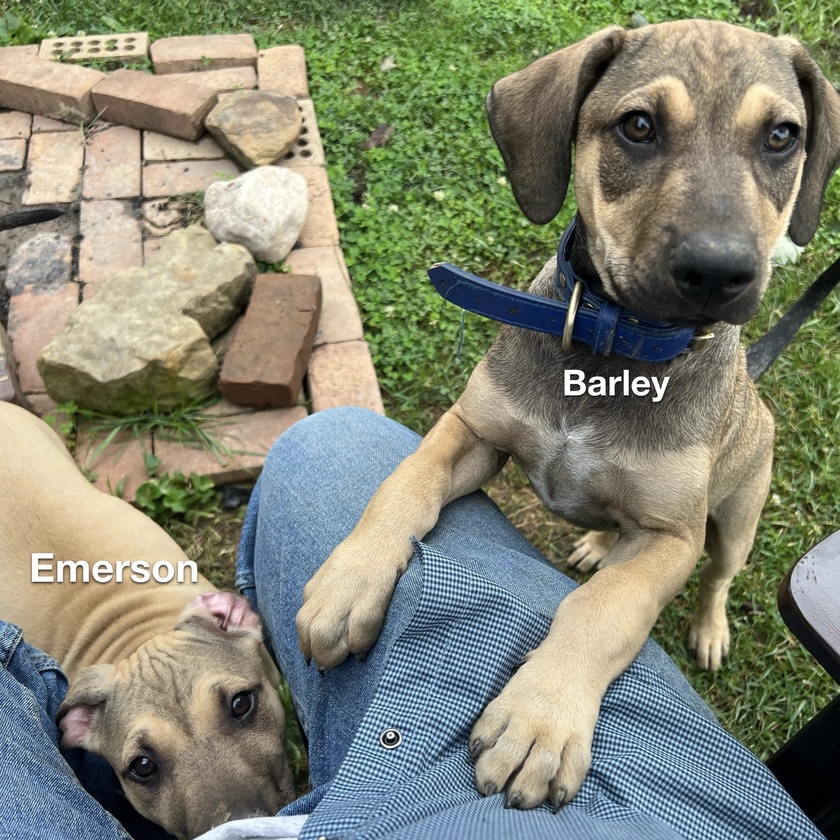
Somebody asked me recently why I got rid of ol’ ornery Orson - a young adult dog I had about the time I started The Practical Woodsman - and I thought maybe all of you would like to know the details of that situation yourselves.
The reality is that I can only own so many dogs at a time. Two is my limit, and that’s stretching it.
Early on, due to social pressure while living in Philadelphia, I had my previous dog, Bradbury, neutered - something I later regretted when he turned out to be the best dog of my life. (Braddy died in April of this year at the age of thirteen.) How was I going to carry on his legacy if he couldn’t produce any offspring?
Many years ago I began to hatch a plan. The solution would be for me to breed my own pups using parents of the same two full breeds that produced Bradbury, and then pick the two best pups out of the litter and work with them from day one.
Hence, it was necessary for me to find two dogs - a male Ladner Black Mouth Cur, and a female Louisiana Catahoula Leopard Dog. But these would not be intended as permanent dogs for myself, since I’m not trying to run a zoo here. In order for me to recreate the ‘Bradbury’ dogs as my personal, permanent dogs, while at the same time not ending up with more dogs than I can care for, I would have to be willing to part with the parents after breeding.
With the mother, I was able to get her for my daughter, so she wouldn’t need re-homing once the deed was done. That left ol’ ornery Orson as a necessary leftover that I had to find another home for.
In order to acquire, and keep, the two best pups that I could possibly find for my life and for my needs, it was just a necessary situation I had to be willing to go through with.
It’s was a once-in-a-lifetime undertaking that I had planned for a decade.
When you rely on other breeders to get a dog, they give you whatever THEY think is best for you. And no matter how good they might be at breeding, I found that it is impossible to communicate to them precisely the dog you want. Furthermore, I’ve found that breeders - no matter how good they are at breeding - are not really trustworthy, in general, for providing you with precisely the dog that you communicate to them that you are interested in, anyway. Many times they will give you any of their dogs, assuring you that it is exactly what you have in mind, when in reality, they just want to home their dogs whatever it takes. If you say you are looking for a dog with very precise traits, and they have one pup left in a litter that needs a home, they will assure you that the remaining pup is exactly what you have in mind.
Regardless, if you have something very specific in mind, they can’t possibly understand the subtleties of what it is you are looking for. In fact, the reality is that most people in general DON’T have an extremely precise desire for very specific traits, so for the average person’s situation, any dog will usually do. They’ll get the dog home and won’t know any difference, and everybody will be perfectly content with whatever they ended up with.
But that is not true for me. I had a very precise understanding of what was possible in a dog, and I was determined to get precisely that.
For my personal, permanent companions, I was determined for them to have very specific traits to serve not only as companions, but as very skilled working dogs out in the backcountry for the next decade and longer. I was making a big investment. So what it came down to was a matter of ‘if you want something done right, you gotta do it yourself’.
Orson found another family to live with, the pups are here and they’re precisely what I hoped for. It has been a lot of work - work going on three years, since I started looking for their parents, raising the parents for a couple of years until they were ready to breed, making sure the breeding was successful, then re-homing not only Orson, but five pups from the litter, and many other things that were involved. And although it has been a massive amount of time and work, it will have been worth it in the end.
Remember, it’s not something I’m probably going to have the time or energy in my life to ever do again. So right now was my one shot to do it and do it right.
Next time around, I’ll simply breed one of these boys I’ve kept - only one of which will remain intact. The other will be neutered.
Or maybe I won’t breed them at all. Maybe at that point in my life I won’t have such precise requirements for a dog and I can just adopt any ol’ dog from the shelter. But right now, while I’m still in my prime, and I’m still so active in the backcountry, on long excursions deep in the mountains alone, not just any dogs will do.
By the way, I had to rename the one I was calling ‘Calliope’, because the name just wasn’t fitting - something I realized as the subtleties of his personality really started to become more evident. His name is Barley now, permanently. For certain. Maybe.
In all seriousness, it is the last name change. Barley is a good fit.


















